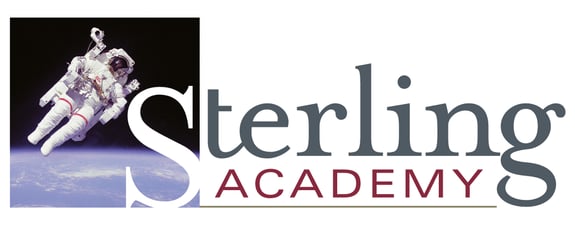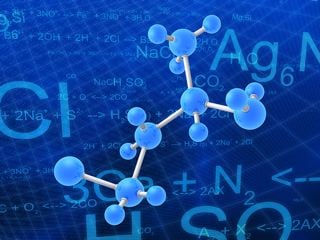Accredited Online High School Science Courses
Accredited Online High School Science Curriculum
Accredited Online High School Science Curriculum

Sterling Academy offers a complete and rigorous science curriculum, ensuring that students are well-prepared for their next step in life. Students study course material and perform labs online, getting practice in the concepts covered in the video lectures and online text. Five of our classes are explained in more detail below. See the complete listing of our online high school science courses on the right. To see the course description for the other courses, click course catalogs
Here is a short demonstration video from our Biology course.
Chemistry
Our chemistry classes are designed to not only help you learn about how elements interact with each other, but how to become a better critical thinker and how to make better-informed decisions about ecological issues facing the world today. The interactive labs present engaging problems for you to solve. For example, in the Biotechnology unit, you will use chemistry principles to "Scan the DNA of frogs to produce DNA fingerprints. Use the DNA fingerprints to identify possible identical twins and to determine which sections of DNA code for the skin color, eye color, and presence or absence of spots"
Physics
Our goal is to have you actively learning physics and this course is designed to give you that experience. The physics classes consist of lectures, reading, problem sets, and interactive labs. This gives you the opportunity to learn using proven strategies such as mastery learning, direct instruction, problem-solving, and worked examples. This course rates very high using the Quality Matters Standards Rubric which is widely used to rate online courses.
The interactive labs are definitely a major strength in this course. For example, in the Sounds and Waves unit, you will use physics principles to "Listen to sounds that have a similar frequency and you will hear pulses (or beats) due to the interference of the sound waves. After listening to beats caused by several known frequencies, you will use your knowledge to determine the frequency of unknown sounds. The beats are a common real‑world application that is very useful when tuning musical instruments."
Biology
In our Biology course, the students actively learn about the study of life and living organisms. Online content and journal activities allow the students to think critically while sharpening their writing skills. Our engaging interactive labs allow the students to visualize what they are studying. For example, in the “Mouse Genetics” lab, the students breed pure mice with known genotypes that exhibit specific fur colors. From this, they learn how traits are passed on via dominant and recessive genes. Mice can be stored in cages for future breeding, and the statistics of fur color are reported every time a pair of mice breed. Punnett squares will be used to predict results.
Environmental Science
We place a special emphasis on the impact of humans on the environment in the Environmental Science course. Students will use evidence, apply logic and examine solutions when identifying environmental problems through use of journal activities, online content, and labs. For example, in the “Water Pollution” lab, the students get to know the four main types of pollution present in the environment. They look at a variety of real-world examples as they try to guess what type of pollution is represented by each situation. All of the real–world situations can be viewed every day in different parts of the world.
Integrated Science
Integrated Science brings together physical science and life science. Students who take Integrated Science will take it instead of Biology, Chemistry, and Physics. Also, students who take Integrated Science must take all three years.
Students will take the information they learn and apply it to specific situations. Scientifically oriented questions in activities that include journal activities and labs will allow the students to formulate explanations based on evidence they are given. For example, in the “Osmosis” lab, students study osmosis through a cell membrane. Students can adjust the concentration of a solute on either side of the membrane in a cell and observe as the system adjusts to these conditions.
Biotechnology: Unlocking Nature's Secrets*
Can we bring back extinct species? Will the cures for cancer, malaria, and other diseases come from the combination of natural materials and new technologies? How is science changing the foods we eat? Welcome to the world of biotechnology! In this course, you will explore the history of biotechnology, including early attempts at food preservation, the development of antibiotics, and changes to food crops around the world. You’ll also learn more about some of the challenges of biotechnology, such as the growth of antibiotic-resistant bacteria and questions about the safety of commercially produced genetically modified organisms (GMOs). Finally, you’ll research new biotechnologies and how they are changing the world we live in.
*Note: This course is a science elective and does not count as a lab-based science course fulfilling a science graduation credit.

Students are required to have 3 credits of science to graduate including 1 credit in Biology. Students who are going on to college are strongly encouraged to take 4 credits of science. Here are additional science courses we offer:
Sterling Academy also offers science courses for students in grades 6-8:
As with the high school offerings, students may choose an alternative route and take Comprehensive Science 1, 2 & 3 throughout middle school in lieu of the above courses.